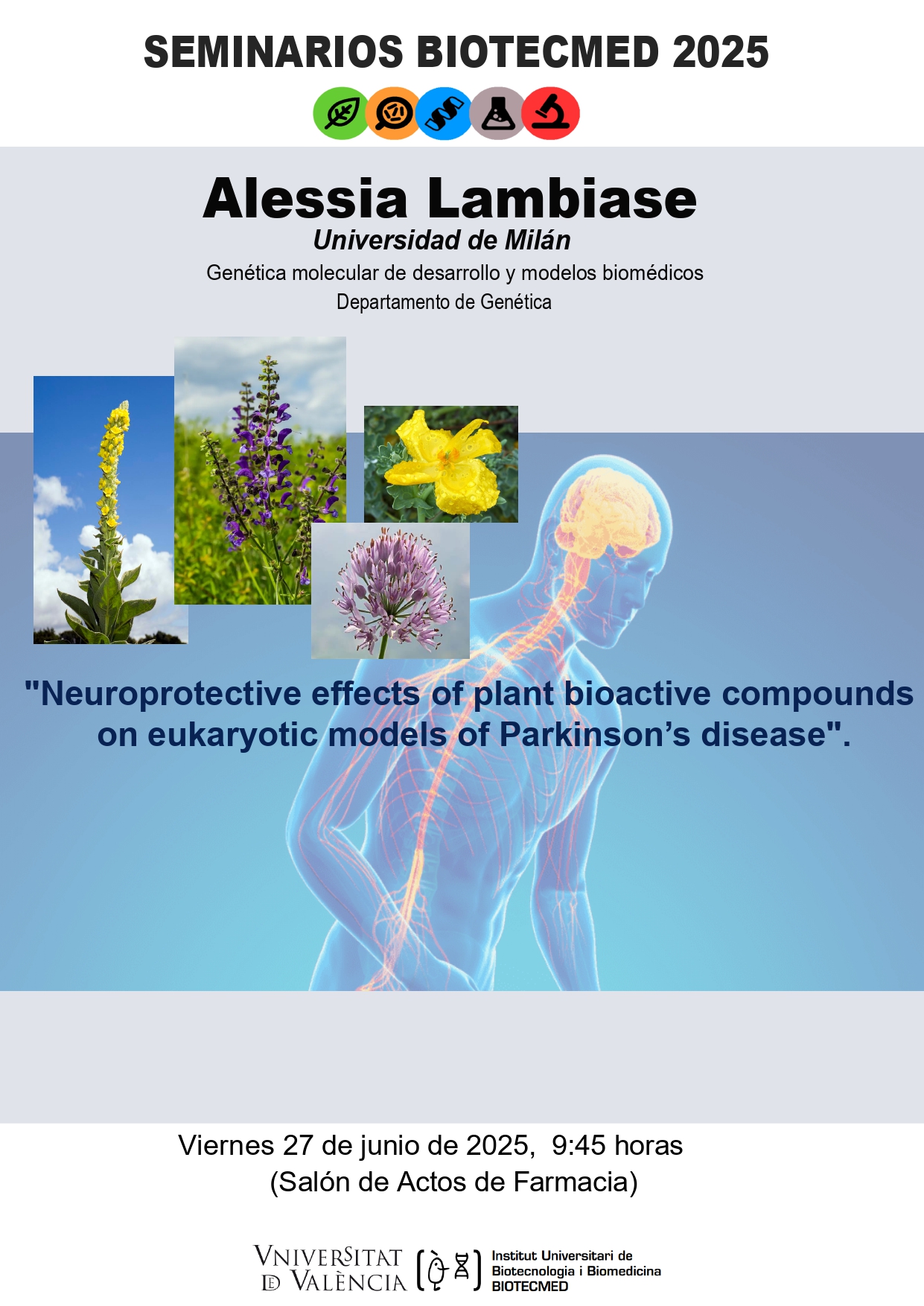
El viernes 27 de junio a las 9:45 h se celebrará la última charla del curso antes de la pausa estival, a cargo de Alessia Lambiase, doctoranda en estancia en el grupo de Genética Molecular del Desarrollo y Modelos Biomédicos.

Este viernes día 27 de junio a las 9:45 h tendremos la última charla del curso. Como la jornada del instituto es el 11 de julio, el resto de charlas pasarán a septiembre e iniciarán la nueva temporada.
En este caso será impartida por Alessia Lambiase, estudiante de doctorado que está de estancia en el grupo de Genética Molecular de Desarrollo y Modelos Biomédicos, dirigido por Nuria Paricio, con el título:
"Neuroprotective effects of plant bioactive compounds on eukaryotic models of Parkinson’s disease". Alessia viene de la Universidad de Milán. La charla se realizará en el salón de actos de Farmacia a las 9:45 h.
Abstract:
Aging and age-related neurodegeneration represent major challenges in modern medicine. Parkinson’s disease (PD) is the fastest growing neurological disorder worldwide and is strongly associated with the misfolding and aggregation of the α-synuclein protein. Plants have long been recognized as a valuable source of bioactive compounds with potential applications in human health, including neuroprotection. One of the key aims of the National Biodiversity Future Centre (NBFC) is the valorization of Italy’s rich plant biodiversity. In this context, 64 endemic Italian plant species were screened to identify novel neuroprotective compounds targeting α-synuclein aggregation, a central pathological feature of PD. Extracts from Allium lusitanicum, Salvia pratensis, Verbascum thapsus, and Glaucium flavum showed strong anti-aggregant activity in yeast models, SH-SY5Y neuroblastoma cells and in vitro assays. Mass spectrometry analysis identified verbascoside as the principal active compound in V. thapsus, capable of directly binding α-synuclein and preventing the formation of toxic oligomers. Additionally, in collaboration with the “ON Foods” NRRP project, the neuroprotective potential of Glycyrrhiza glabra leaves, an agro-industrial by-product, was explored. Among its bioactive constituents, pinocembrin demonstrated particularly promising effects. Both verbascoside and pinocembrin are currently under investigation in a Drosophila melanogaster PD model to assess their efficacy at the organismal level and support their potential for PD prevention or treatment.
Os esperamos
.png)






